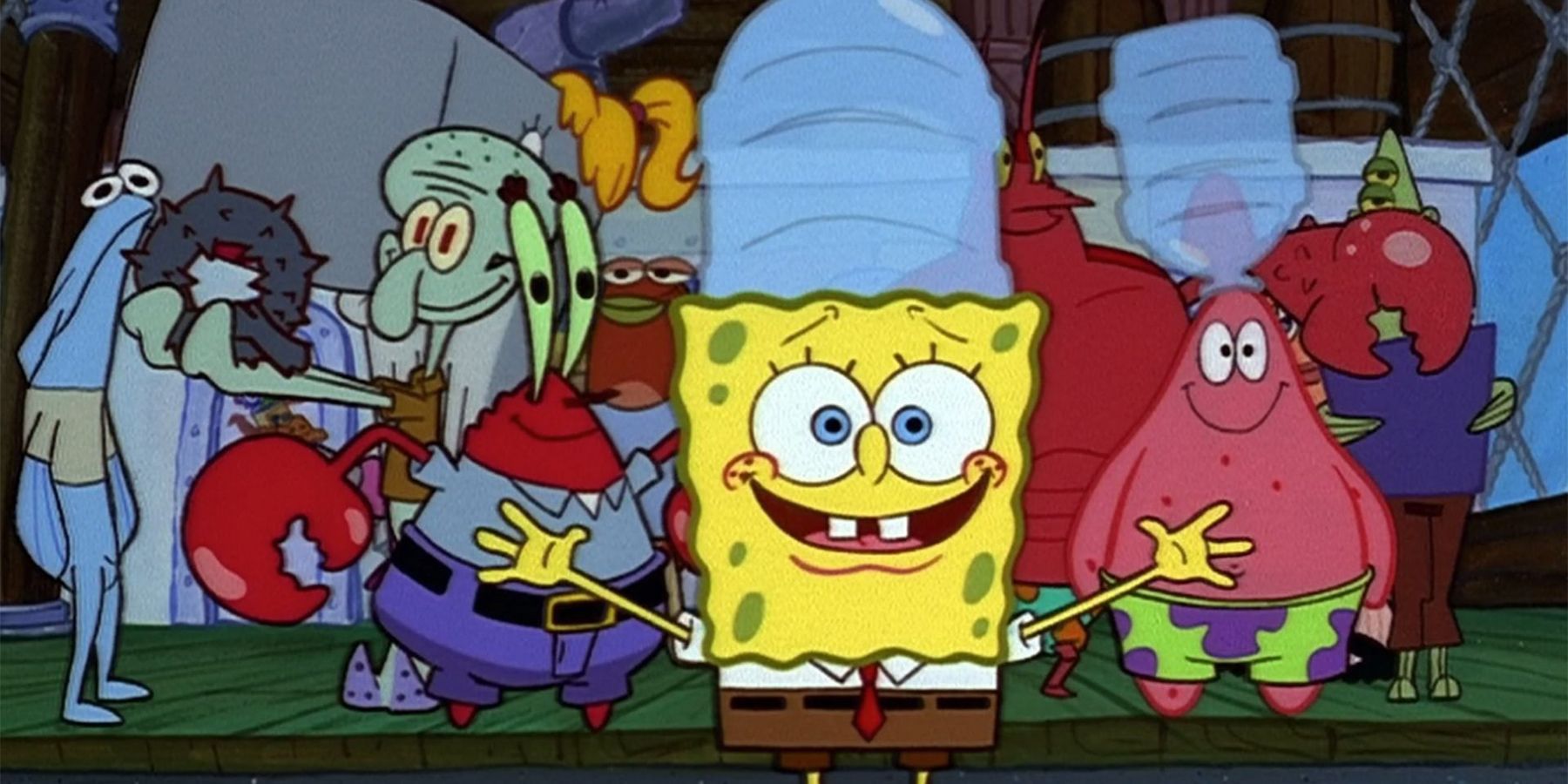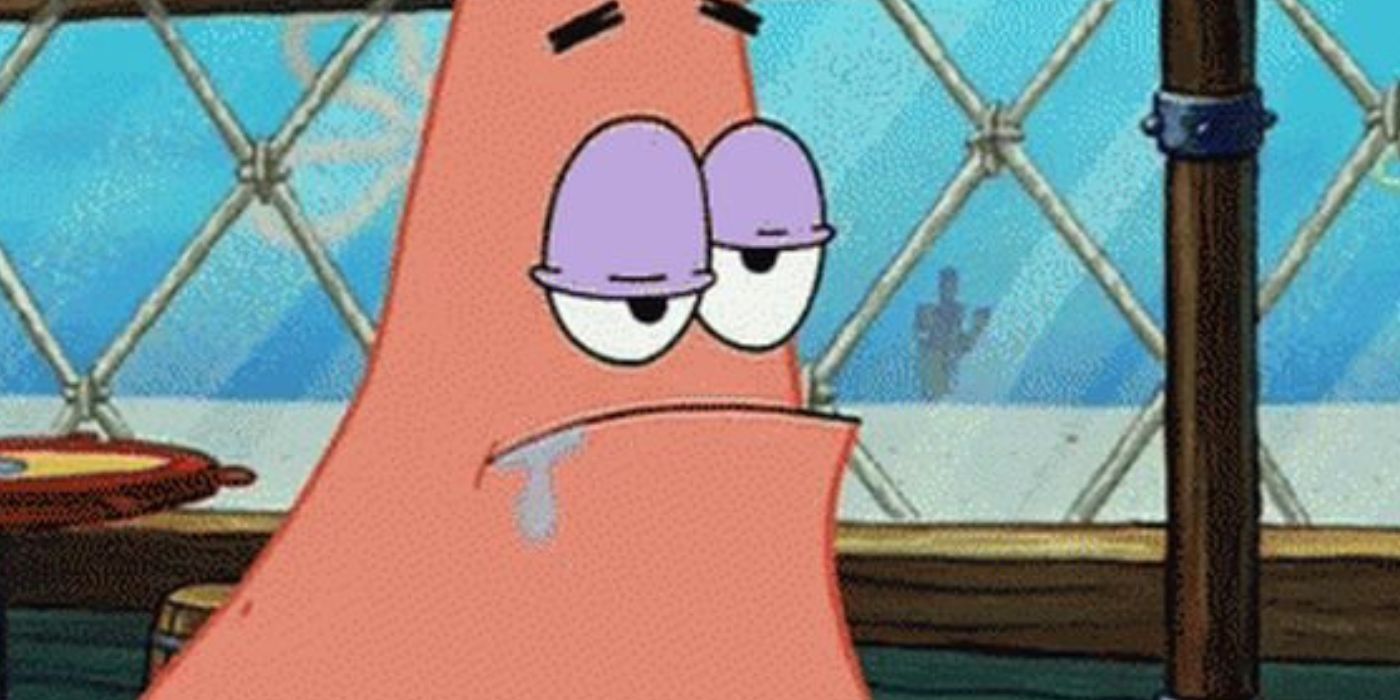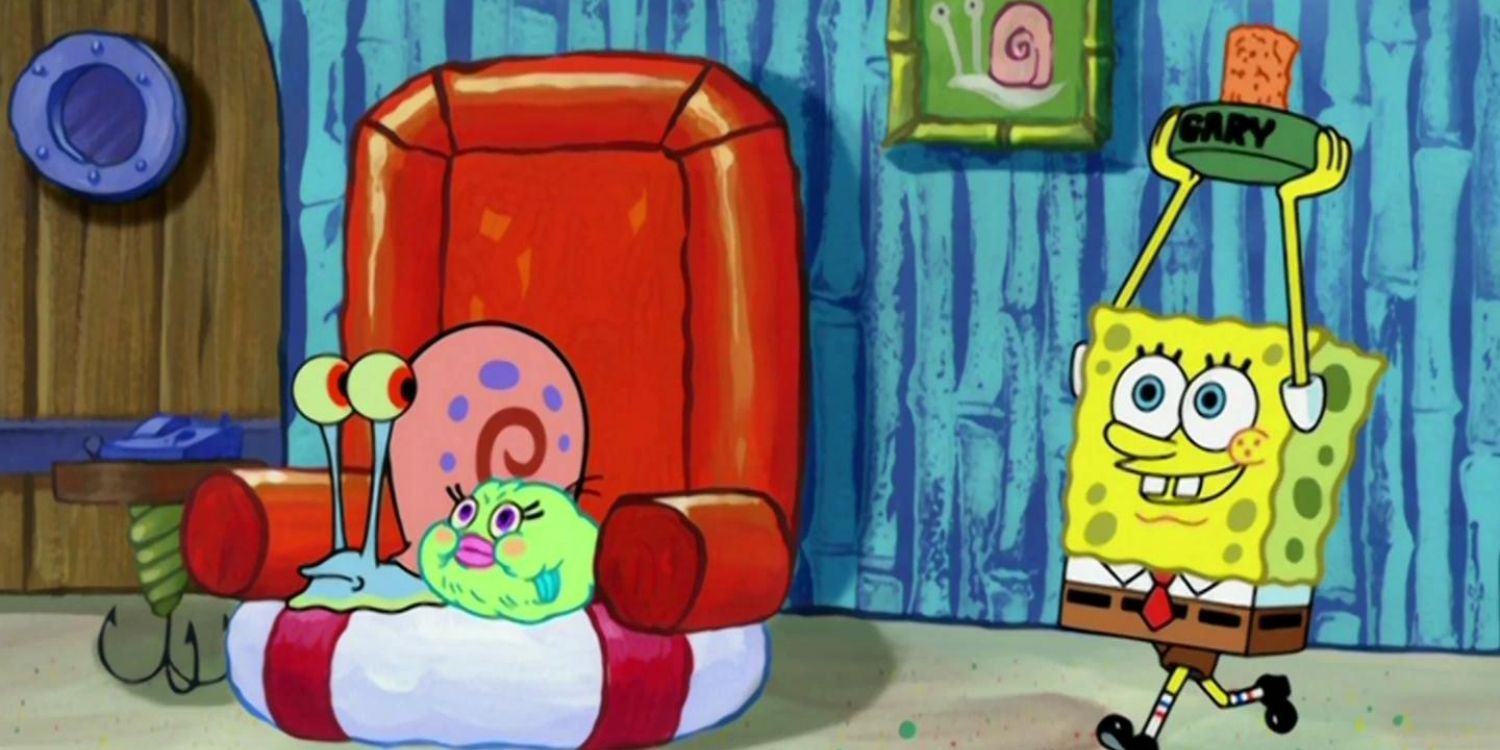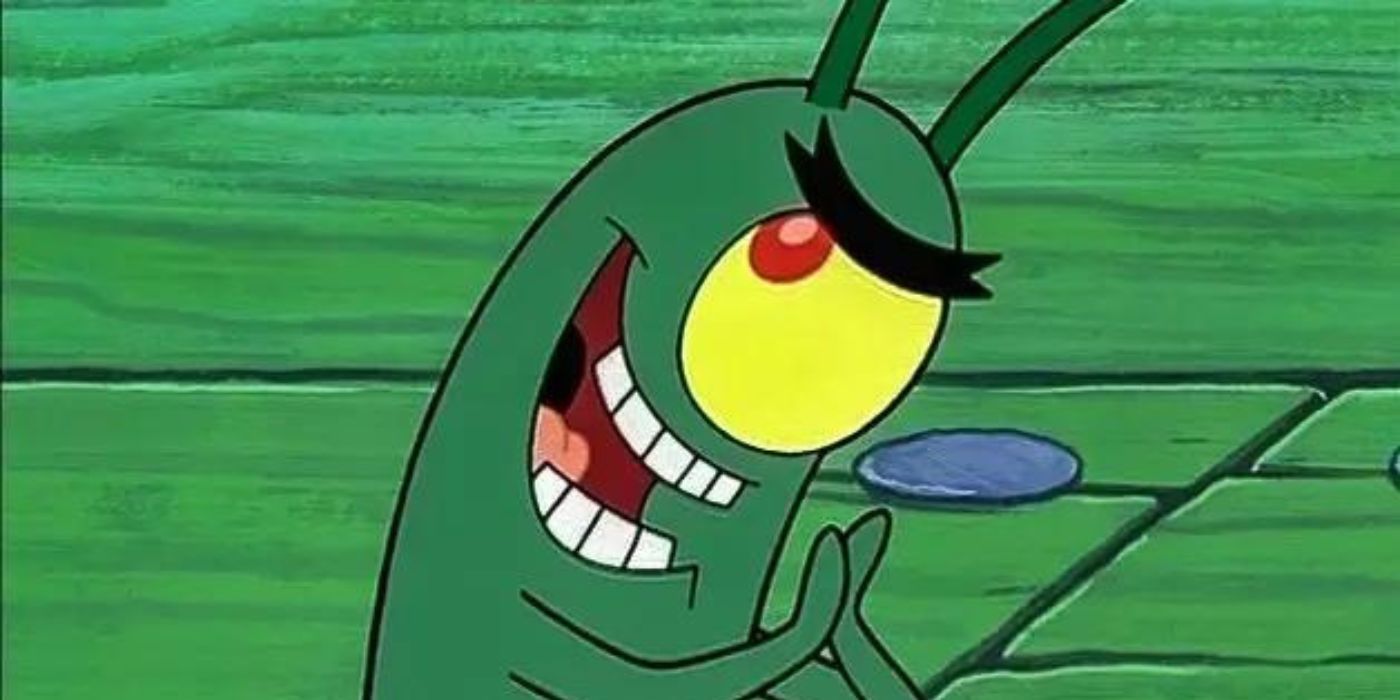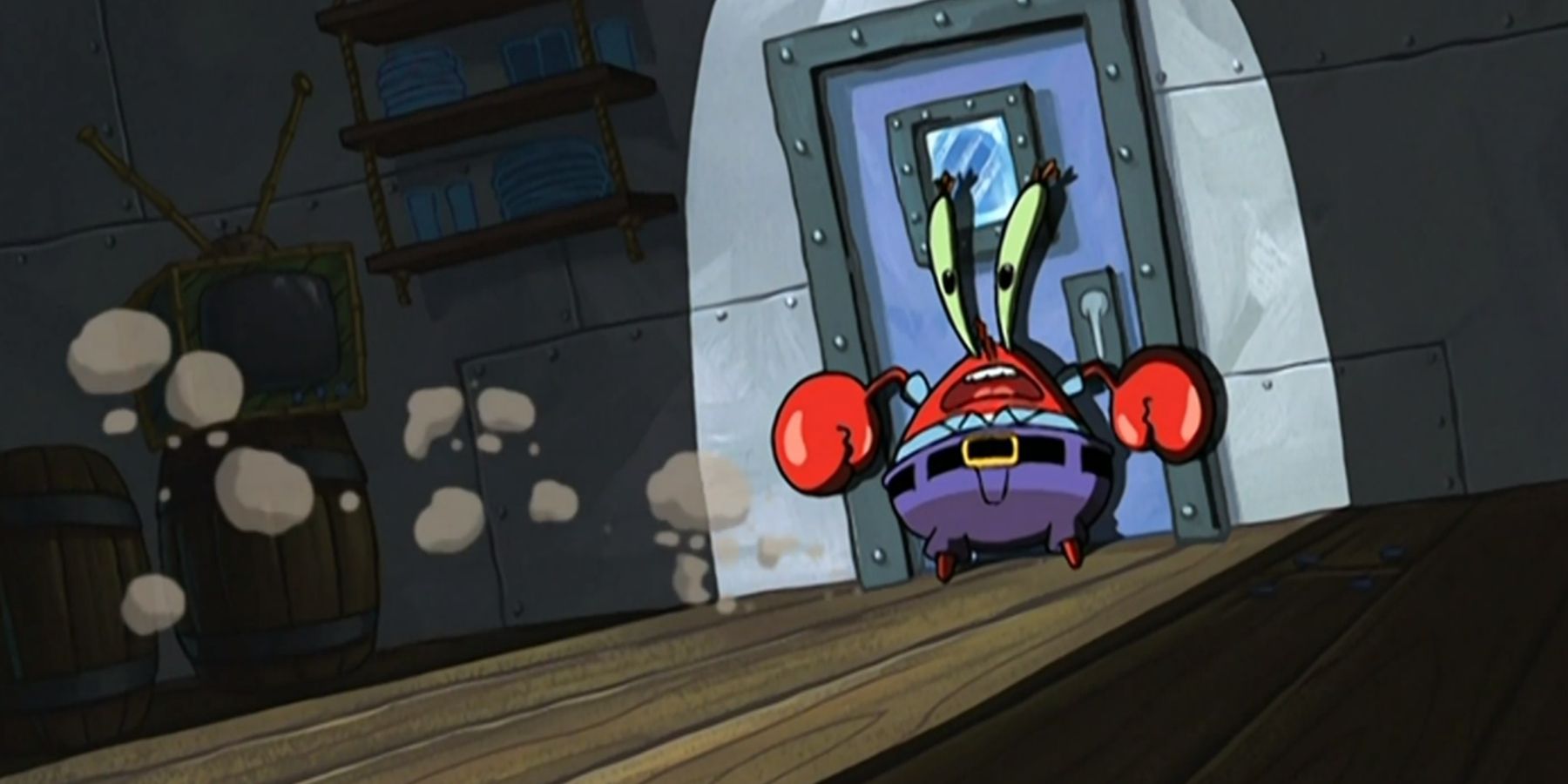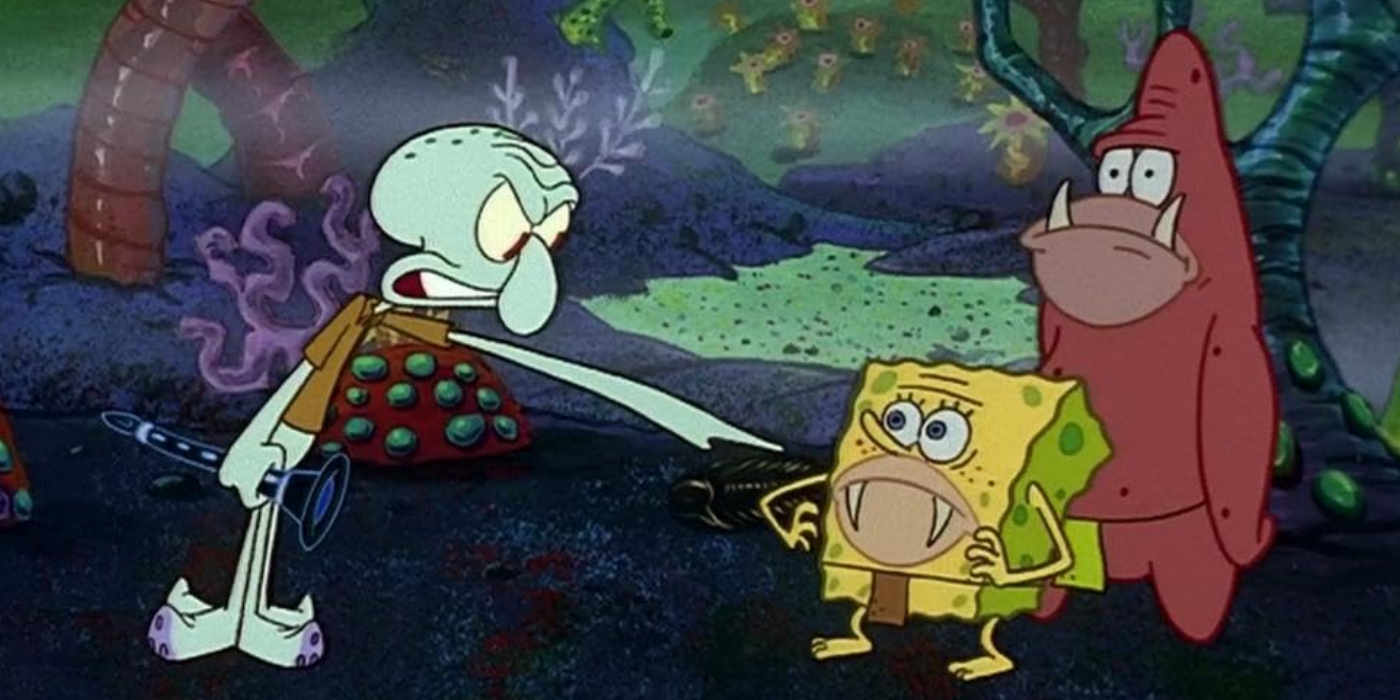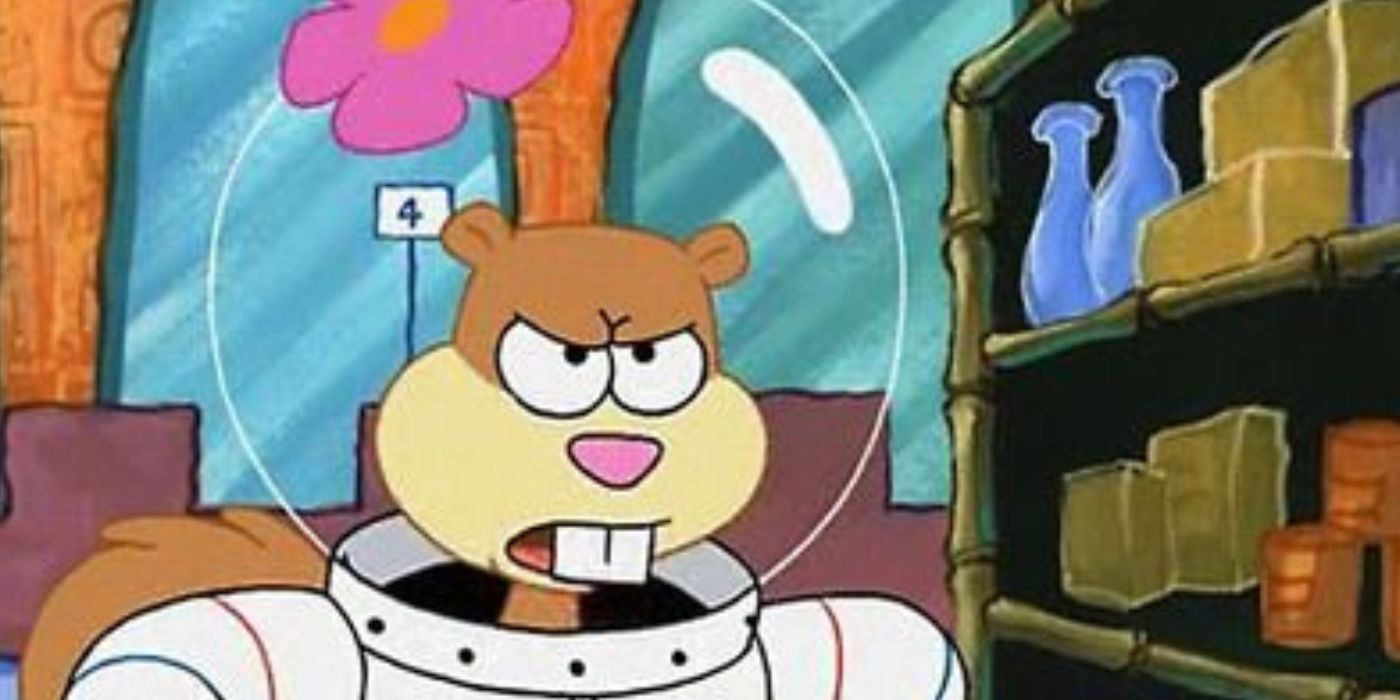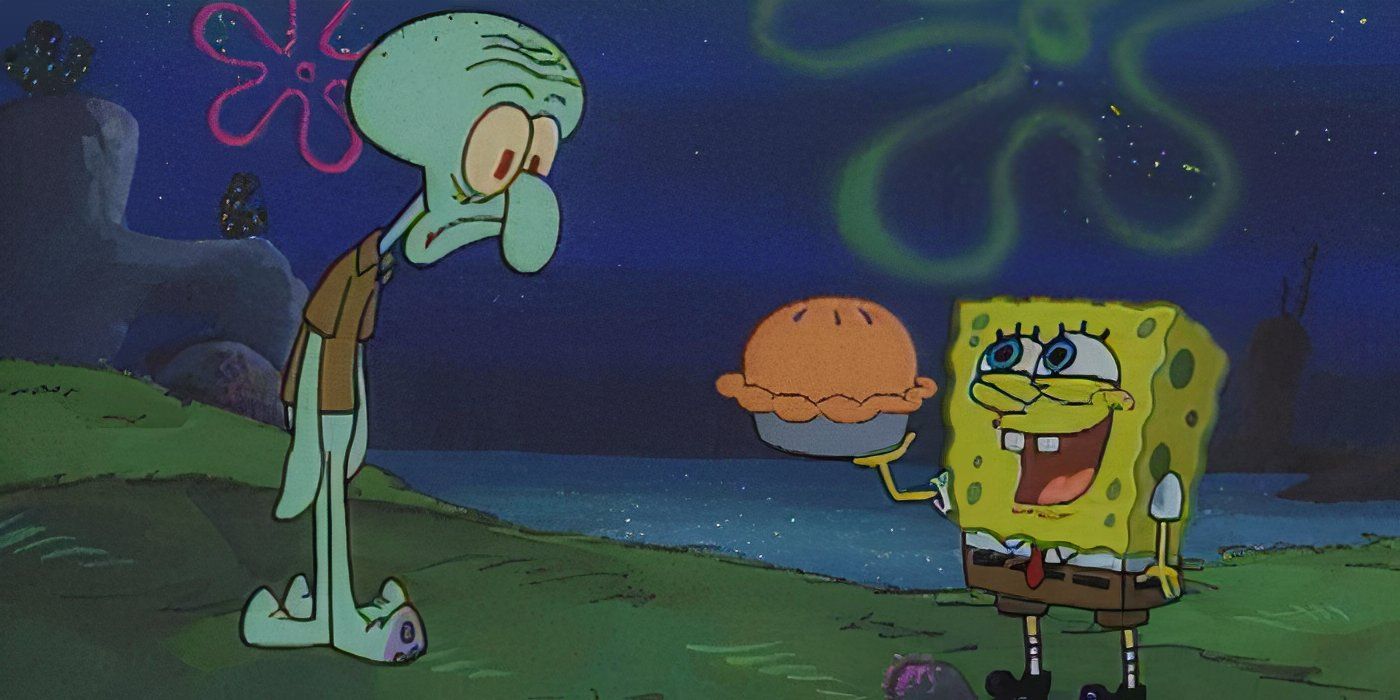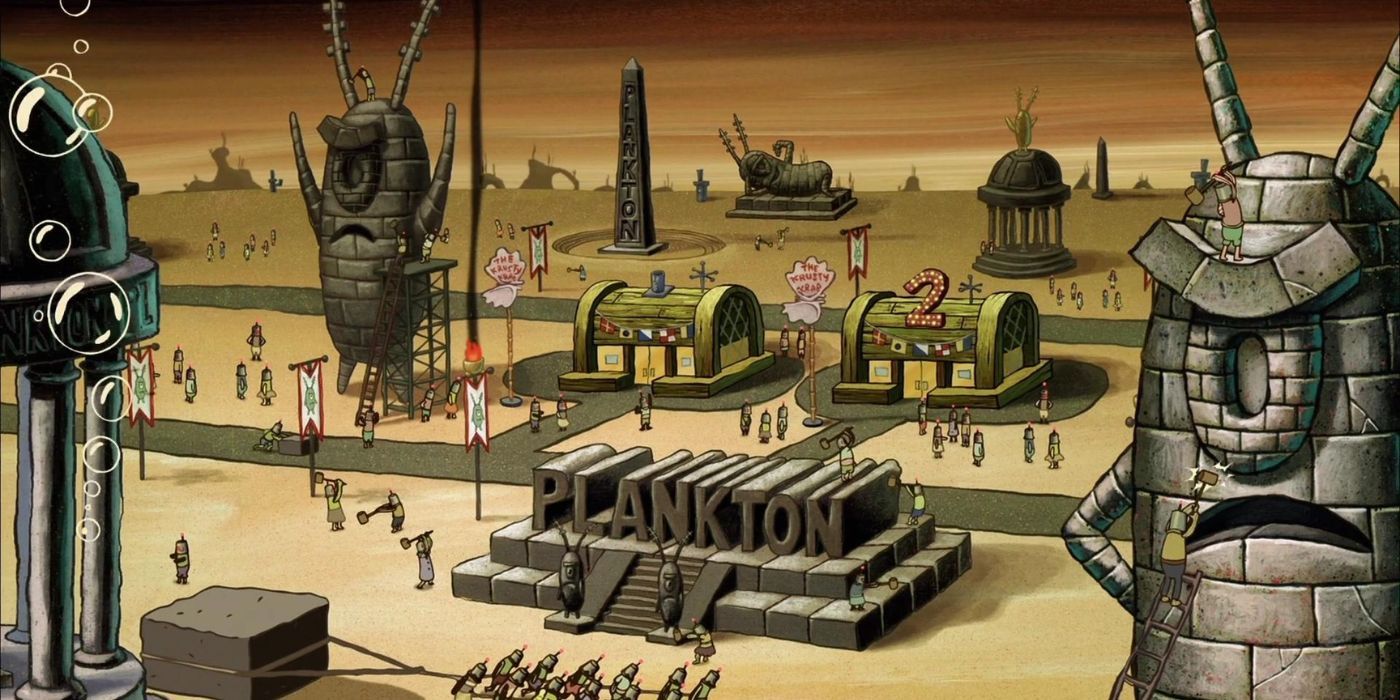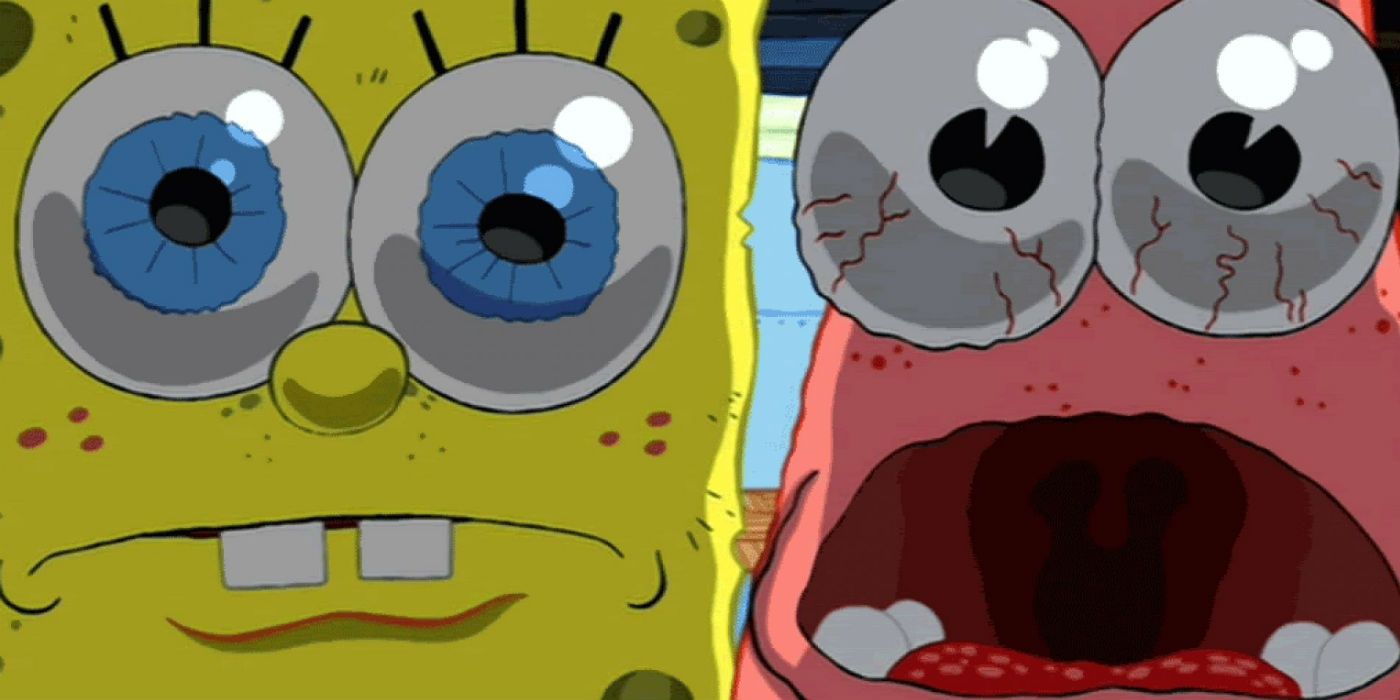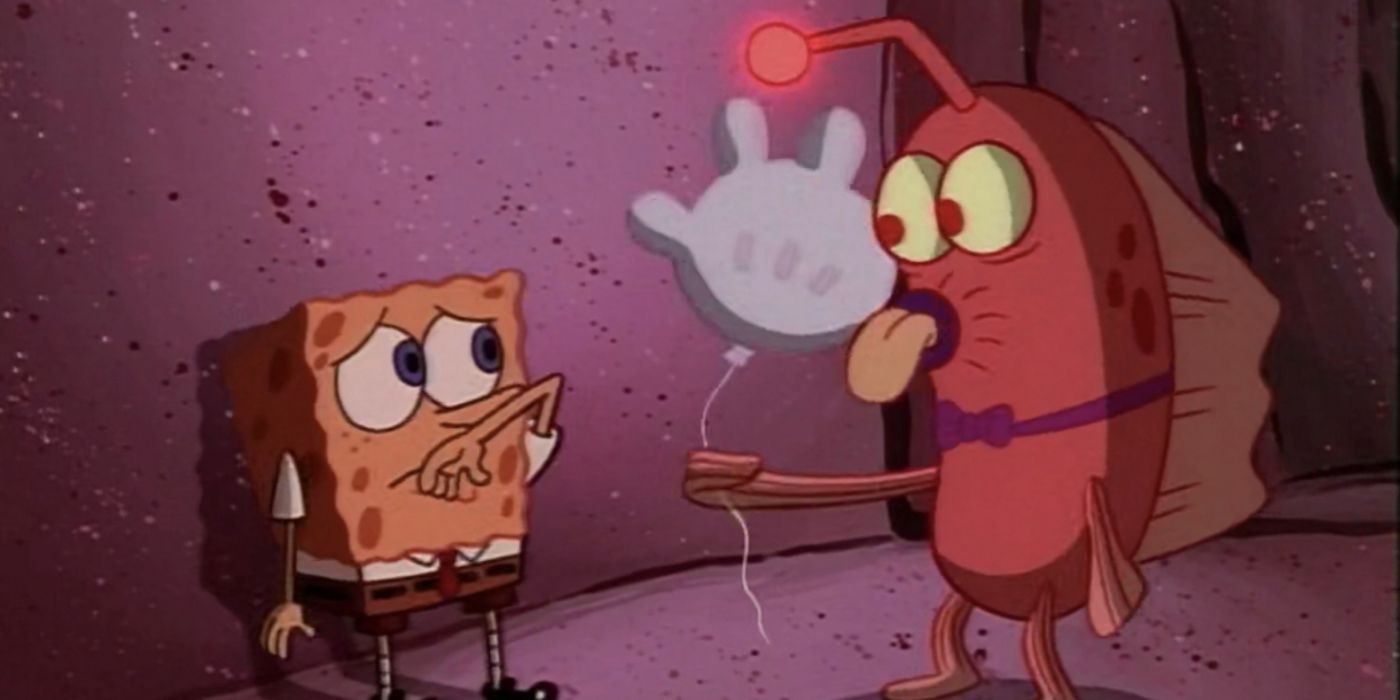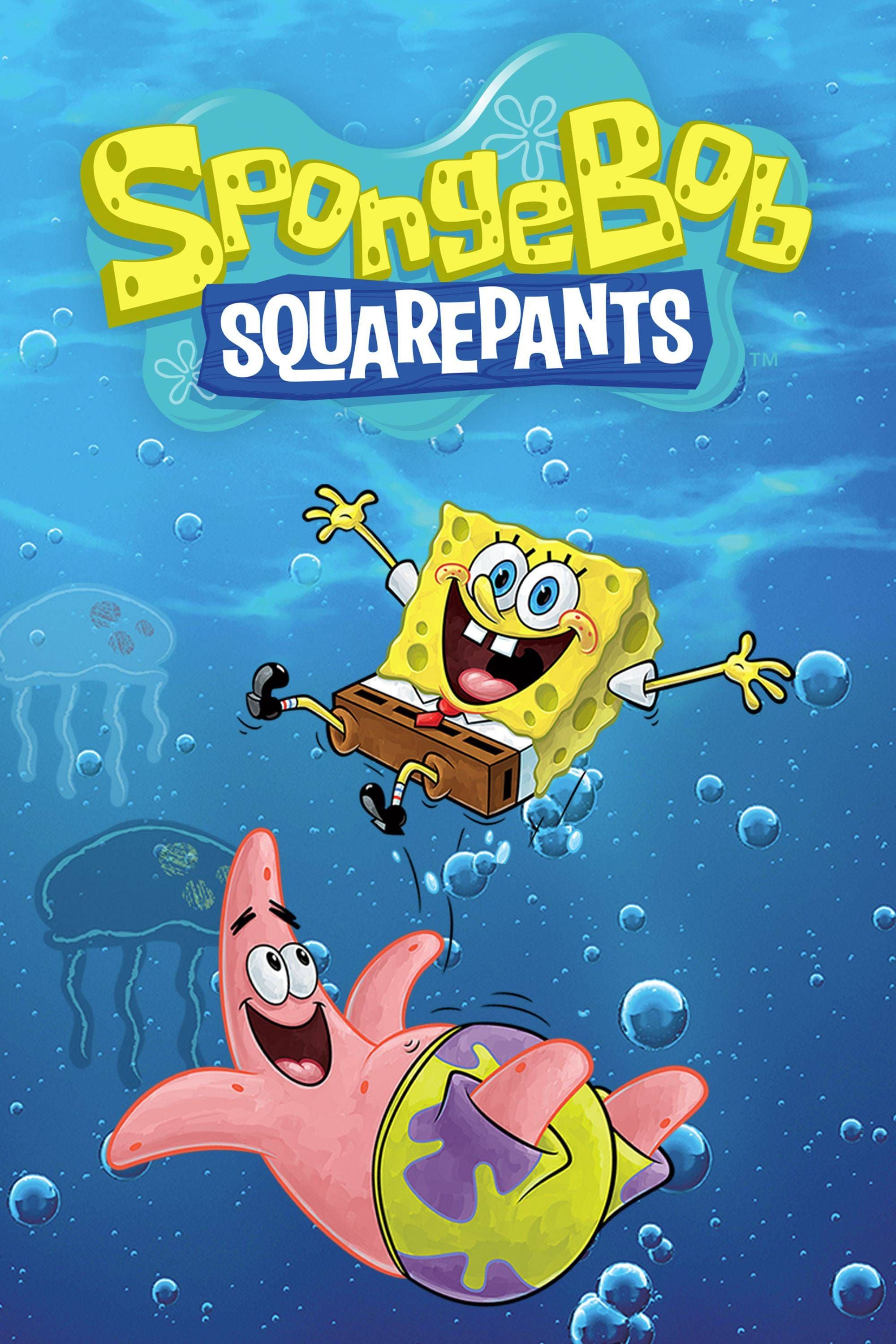Summary
- The
SpongeBob SquarePants
7 Deadly Sins theory adds depth to the characters and enhances the show’s fun and silliness. - Characters like Patrick, Gary, and Mr. Krabs represent specific deadly sins like Sloth, Gluttony, and Greed in the theory.
- Despite fan theories, creator Stephen Hillenburg intended
SpongeBob
to be a fun, light-hearted show for kids.
The outrageous characters in SpongeBob SquarePants have spawned numerous fan theories, and one of the most intriguing (and eerily plausible) is the SpongeBob 7 Deadly Sins theory. As the name suggests, some viewers have found similarities between the SpongeBob characters and the seven sins outlined in the Bible (Sloth, Gluttony, Pride, Lust, Greed, Envy, and Wrath). SpongeBob and company have faced a near-limitless variety of circumstances, and this theory maintains that throughout their many whacky struggles and antics, they’ve each displayed qualities that align them with one of the 7 Deadly Sins.
While the SpongeBob 7 Deadly Sins theory has gained traction due to the fact that’s it’s a completely theoretical reading, and it somehow adds to the show. The popular SpongeBob 7 Deadly Sins theory explains that each of the main characters, from Squidward Tentacles to the scientist Sandy Cheeks and SpongeBob himself, represents one of the 7 Deadly Sins. Considering that there are seven primary characters on the show who’ve been around for years, it’s not as strange of an idea as it seems on the surface.
Related
SpongeBob SquarePants: Every Season So Far, Ranked
SpongeBob SquarePants never fear, a ranking of every season so far is here.
Which Deadly Sin Each SpongeBob Character Represents
SpongeBob has, over the course of two decades, introduced viewers to some truly colorful characters, of which many have become main characters, such as SpongeBob’s best friend Patrick, their neighbor Squidward, their friend Sandy, and SpongeBob’s boss Mr. Krabs. Each of the SpongeBob characters has larger-than-life quirks and eccentricities. However, according to some viewers, these are actually a reflection of the SpongeBob seven deadly sins theory, with each character representing a specific Biblical sin:
|
SpongeBob SquarePants Character |
Deadly Sin |
|---|---|
|
Patrick |
Sloth |
|
Gary |
Gluttony |
|
Plankton |
Envy |
|
Mr. Krabs |
Greed |
|
Squidward |
Wrath |
|
Sandy |
Pride |
|
SpongeBob |
Lust |
The links in the SpongeBob 7 deadly sins theory are unnervingly easy to make. Fans have been able to determine which SpongeBob characters correspond to which of the seven deadly sins easily, and without much argument among the fanbase about the majority of the character assignations.
Patrick Represents Sloth
One of the easiest characters to pin down when it comes to the SpongeBob SquarePants 7 deadly sins theory is Patrick, SpongeBob’s lazy neighbor. Patrick is Sloth, meaning excessive laziness — something Patrick is superb at to the point where he once got an award for doing absolutely nothing. Even Patrick’s speech patterns show his severe lack of effort, as he always speaks in a slow, almost-slurred drawl.
While Patrick getting a job has been the subject of several
SpongeBob SquarePants
episodes — such as when he came to work at the Krusty Krab — he is always shown to make a minimal effort.
In terms of specific points that label Patrick as Sloth beyond his mannerisms, there are several key facts about the starfish that regularly crop up in discussions. The first is that he’s never had a stable job. While Patrick getting a job has been the subject of several SpongeBob SquarePants episodes — such as when he came to work at the Krusty Krab — he is always shown to make a minimal effort. What’s more, he literally sleeps under a rock with no furniture to speak of, which further hints at his excessive laziness and ties him perfectly to the sin of Sloth.
Gary Represents Gluttony
Gluttony is one of the more tenuous links when it comes to this particular fan-theory, but the SpongeBob SquarePants 7 deadly sins interpretation points to SpongeBob’s most loyal companion as being tied to Gluttony. Gary, SpongeBob’s pet snail, is included as the representation of Gluttony, since Gary doesn’t really do much aside from eating (although he has shown high intelligence). There is even an episode where he runs away due to not being fed, and he’s constantly shown to over-eat.
Some versions of the SpongeBob sins theory also point to Mrs. Puff, SpongeBob’s despairing driving instructor, as being the gluttony representation. Mrs. Puff is always shown as having a particular fondness for food. However, unlike Gary, she’s never really shown to over-eat, nor does she have any episodes that show her acting irrationaly due to missing a meal like SpongeBob’s gluttonous pet snail.
Plankton Represents Envy
One of the more obvious connections in the SpongeBob SquarePants fan theory linking characters to the 7 deadly sins of the Bible is that of Envy, which is, of course, perfectly represented by the only real villain in Bikini Bottom, Plankton. Plankton is a no-brainer for Envy in the SpongeBob seven Deadly Sins theory, as his life revolves around stealing the Krusty Krab’s secret Krabby Patty formula.
So deep is Plankton’s envy of Mr. Krabs that even Plankton’s robot wife, Karen, is sick of hearing about the success of her husband’s rival.
Almost every Plankton-based episode of SpongeBob SquarePants involves him trying to steal the Krabby Patty secret formula from Mr. Krabs, and it’s even the launching point for the plot of multiple SpongeBob movies. The Chum Bucket, Plankton’s restaraunt, is incredibly unsuccessful compared to the Krusty Krab, and Plankton both laments and obsesses over this fact. So deep is Plankton’s envy of Mr. Krabs that even Plankton’s robot wife, Karen, is sick of hearing about the success of her husband’s rival.
Mr. Krabs Represents Greed
As for Plankton’s rival Mr. Krabs, he is, of course, the incarnation of Greed, which is marked by an excessive love for money and material things. Just like Plankton, Mr. Krabs is one of the most obvious links between a character and a Biblical Sin in SpongeBob SquarePants, to the point that it’s incredibly likely he was the first character matched to their corresponding sin when the theory was initially conceived.
The greed of Mr. Krabs is a running joke throughout SpongeBob SquarePants, and is perhaps the defining trait of his entire character. Mr. Krabs lives for money and will do anything to get it, even if that means putting himself and others at risk. He even has nightmares about refunds, and is shown to get excited even over the tiniest amount of money (such as when Plankton, after being foiled yet again, hands Mr. Krabs his last penny).
Squidward Represents Wrath
The ever-angry Squidward is Wrath in the SpongeBob seven deadly sins theory, which involves an uncontrollable hatred towards everything. This is another link between a SpongeBob character and a deadly sin that seems incredibly obvious. Squidward seems to have no thoughts in his head that don’t involve anger at someone else — normally SpongeBob or Patrick, but also characters like his rival Squilliam Fancyson.
Even when SpongeBob does something nice for Squidward, Squidward is loathed to admit his gratitude (if he even does)
Squidward hates almost everyone and everything in Bikini Bottom, except for himself and his clarinet. He is regularly shown to lose his temper, get into arguments, and display many other traits associated with the sin of Wrath. Even when SpongeBob does something nice for Squidward, Squidward is loathed to admit his gratitude (if he even does), and has made it clear on multiple occasions that he’d be much happier if SpongeBob simply didn’t exist.
Sandy Represents Pride
Pride is one of the more difficult sins to link to a SpongeBob character, as all have moments where they show an over-appreciation of themselves. SpongeBob is incredibly proud of his work at the Krusty Krab, for example, and SquidWard has an inflated ego when it comes to his skills with the clarinet. However, the SpongeBob SquarePants theory links the sin of Pride to Bikini Bottom’s resident land-mammal, Sandy Cheeks.
Sandy represents Pride according to the theory because she’s highly competitive, has a big ego, and is very proud of her Texas heritage (she even wrote a song about it). She’s also been known to brag about her athletic prowess and her abilities as a scientist which — while certainly impressive compared to many of the other SpongeBob SquarePants characters — are things she’s never shown herself to be humble about.
SpongeBob Represents Lust
Last but not least is SpongeBob himself, who, according to the theory, represents Lust. Despite being the titular character of the show, SpongeBob’s place in the 7 deadly sins theory is also one of the most tenuous, with some versions of the theory placing Mr. Krabs’ daughter, Pearl, as the representation of Lust instead. The term is usually understood as an excessive sexual desire, which is where the boy-obsessed teenager Pearl fits in, but others define it as an excessive love for others — a definition that more than fits SpongeBob.
Squidward’s insults and repeated requests for SpongeBob to leave him alone only result in the titular sea-sponge trying to befriend him even harder than before.
That’s where SpongeBob falls, as he certainly shows an incredible amount of love for his friends (and for Spongebob‘s miserable Squidward, who doesn’t consider himself a friend of SpongeBob) to the point where it can be annoying to some. It could also be interpreted as SpongeBob having an intense desire to be loved, no matter the consequences. This is especially evident in his relationship with Squidward, as Squidward’s insults and repeated requests for SpongeBob to leave him alone only result in the titular sea-sponge trying to befriend him even harder than before.
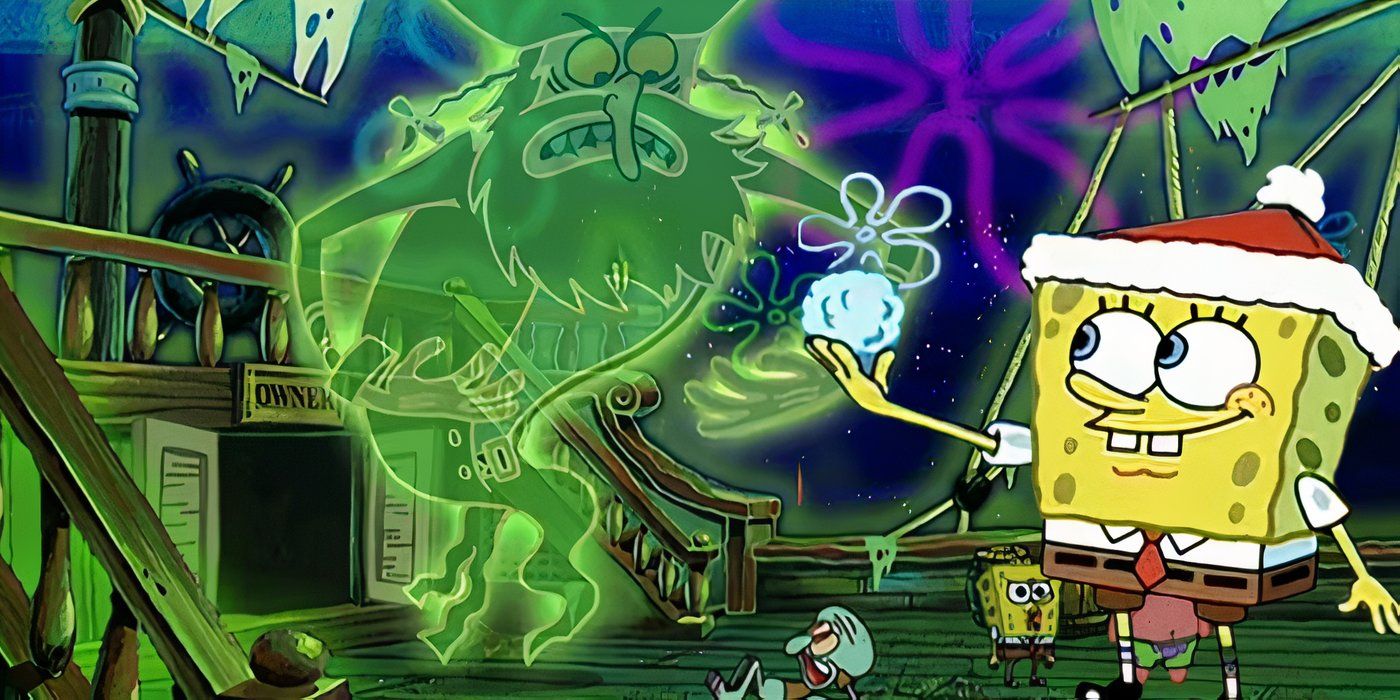
Related
SpongeBob SquarePants: The 25 Best Episodes Of All Time
SpongeBob SquarePants is a gem of a television show, and these episodes are the best of the animated comedy series.
How The SpongeBob Seven Deadly Sins Theory Makes SpongeBob Better
The Fan Theory Enhances The Aburdist Cartoon
The SpongeBob characters do share some traits that coincide with the seven deadly sins, but it’s unlikely that was done on purpose. Even between those who support the theory are some disagreements, especially regarding Squidward and Sandy, as some believe Squidward is pride and Sandy is wrath. Like with many other theories related to children’s TV content, this SpongeBob SquarePants one is more for fun than something to be taken as a fact – unless confirmed by a producer or writer.
The theory adds an unintended layer of darkness that isn’t part of
SpongeBob SquarePants
but makes the show more fun and elevates its silliness.
This is unlikely, considering the show refuses to commit even to SpongeBob’s age, let alone the characters having set-in-stone personality traits that would tie them to a Bible passage. SpongeBob SquarePants is artfully chaotic and can be viewed through different mental lenses. Kids’ shows aren’t usually open to interpretation, but the SpongeBob characters are so out there and left-field that it bucks the trend, and watching SpongeBob with the perspective that they’re the 7 Deadly Sins makes for some bizarre and amusing viewing.
Given the anarchic nature of the show, it’s almost like the world of Bikini Bottom rewards the “Sins” (or at least never finds a way to truly reform the characters). When interpreted this way, SpongeBob, Patrick, Squidward, and co. almost become a strange inversion of The Sandman’s Endless — immortal beings destined forever to embody an abstract concept.
On a deeper level, the idea of religious parallels hidden among the wholesale nonsense of SpongeBob SquarePants is hilarious. The show doesn’t even take the scientific accuracy of the marine life seriously, let alone bother with underlying complex themes. There are underwater fires, SpongeBob and Patrick catch Jellyfish in nets as a pastime, and there’s a crab with a teenage whale for a daughter.
Despite having some real-life inspiration in SpongeBob SquarePants, the show is objectively ridiculous, even more so when coupled with speculation around a hidden religious subtext. The theory adds an unintended layer of darkness that isn’t part of SpongeBob SquarePants but makes the show more fun and elevates its silliness.
The 7 Deadly Sins Comparison Isn’t The Darkest SpongeBob Theory
There Are Many Incredibly Dark SpongeBob SquarePants Interpretations
The internet is the perfect place to find dark fan theories about Nickelodeon and Cartoon Network’s most popular shows, as evidenced by some of the more unsavory SpongeBob theories out there. The SpongeBob 7 sins theory isn’t the only fan-made reinterpretation of the show, although it’s definitely one of the more macabre. However, the SpongeBob seven deadly sins theory isn’t the darkest — that award goes to the theory that Mr. Krabs is a cannibal.
The money-grubbing Mr. Krabs has found his main source of income in the Krabby Patty. However, one fan theory posits that Mr. Krabs is actually a cannibal and crab meat is what makes the Krabby Patty so special. This theory is further supported by the fact that there are literally no other crabs in Bikini Bottom.
Other dark SpongeBob fan theories have surfaced over the years. One theory posits that the SpongeBob characters all represent different forms of mental illness, with SpongeBob himself representing ADHD, or Attention Deficit Hyperactivity Disorder. Another weird fan theory out there is that each SpongeBob character is on a different type of drug. This theory suggests SpongeBob is on shrooms, Mr. Krab is on cocaine, Squidward has a heroin addiction, and Patrick Starr is a cannabis enthusiast of Snoop Dogg proportions. All of these silly fan theories aside, the SpongeBob SquarePants seven Deadly Sins theory is definitely one of the darker ones on the roster.
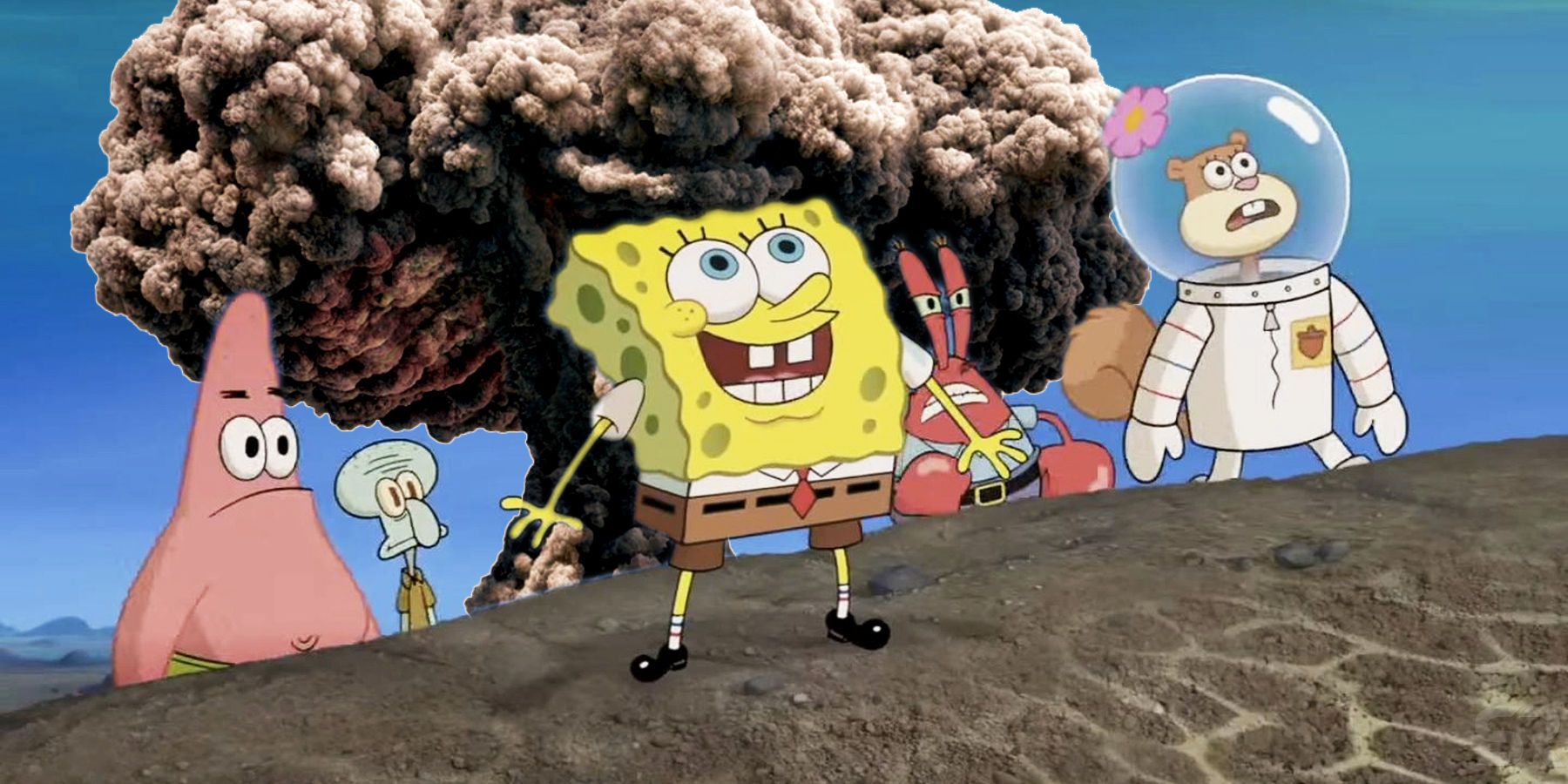
Related
SpongeBob SquarePants Theory: Bikini Bottom Is A Nuclear Test Site
There are many cartoon theories out there, but the one about SpongeBob SquarePants’ Bikini Bottom being a nuclear test site actually holds some truth.
Was SpongeBob Made With A Hidden Meaning?
As Bizarre As It Is, There’s No Hidden Depth To SpongeBob SquarePants
SpongeBob SquarePants is an incredibly surreal show with some dark moments. Even if the SpongeBob seven deadly sins theory is just an intriguing thought exercise, many viewers have wondered if there’s a hidden meaning to the show. With such high levels of absurdist comedy, there are plenty of otherwise-nonsensical elements that could be explained if the SpongeBob SquarePants creator had in fact worked a deeper subliminal meaning into the show.
While this fanciful idea would be almost on-brand for the wild and whacky antics of SpongeBob SquarePants, theories like the seven deadly sins SpongeBob character comparisons are the closest the show gets to having any overarching metaphorical narrative beneath the episode-by-episode events. SpongeBob SquarePants was created by the late Stephen Hillenburg. While Hillenburg never got to give his thoughts on the SpongeBob seven deadly sins theory in an interview, he was candid about how he came up with SpongeBob in the first place — and it’s clear that trying to find any hidden meaning in his work is both severely overthinking it and not what he intended.
Speaking to The Guardian in 2016, Stephen Hillenburg explained how he came up with the idea for SpongeBob SquarePants while working on Rocko’s Modern Life, and how it was optioned as a show. Suffice to say, Nickelodeon wasn’t interested in SpongeBob because it had some deep hidden meaning like the seven sins theory. Hillenburg had a simple objective — make a fun kid’s show about a talking sea sponge. In fact, his wholesome desires for SpongeBob SquarePants as a character couldn’t be further away from the dark SpongeBob fan theories. He simply wanted the character to love his job:
I wanted SpongeBob to love his job. I always imagined a kid going into McDonald’s and seeing a guy cooking and thinking it was the best job in the world: “You can eat hamburgers all the time!”
Far from being the product of mental illness or him embodying a biblical sin, SpongeBob is perpetually happy because he’s inspired by the outlook of a child. The same is true of the other characters. Mr. Krabs isn’t pathologically obsessed with money because he’s a living manifestation of the sin of greed — he’s that way because, like with every SpongeBob SquarePants character’s larger-than-life personality, kids find it hilarious.
The SpongeBob SquarePants seven deadly sins theory certainly adds an extra layer to the show, but it’s clear from Hillenburg’s own words that, when creating it, he wasn’t setting out to hide any subliminal metaphors among the twee and colorful antics of SpongeBob, Patrick, and Squidward.

